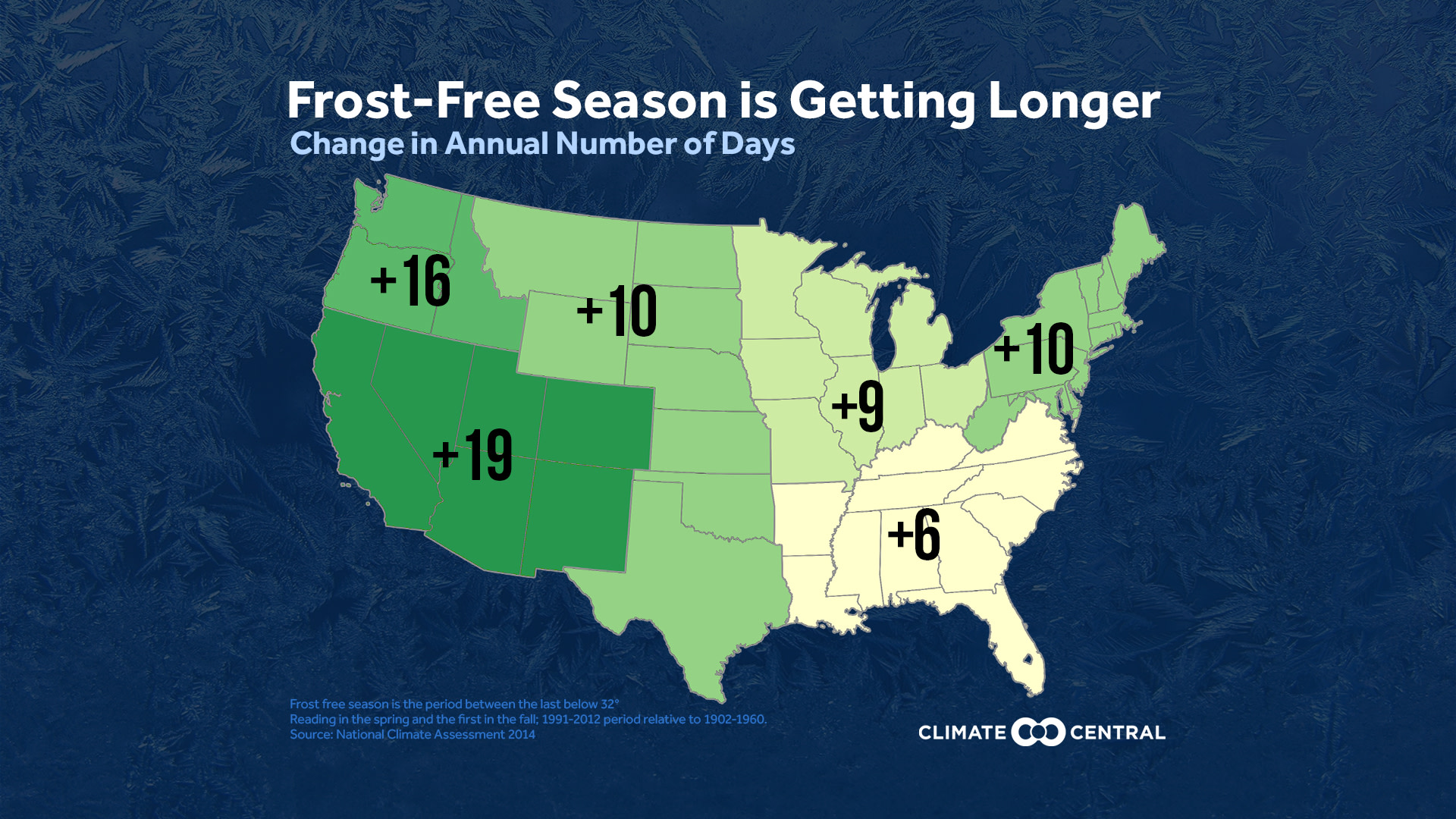In the fall, we often expect to wake up to frost-covered windows, but a warming world is altering the average time when we first see those mornings occur. The frost-free season, defined as the stretch between the last 32°F reading in the spring and the first 32°F reading in the fall, has increased in length over the past 30 years, with both an earlier last frost in the spring and a later first frost in the fall.
The average duration of the frost-free season is about 15 days longer across the U.S. than it was in the early 20th century. Every year since 1980 has experienced a longer frost free season than the 1895 to 2015 average. While there will continue to be variations in the amount of frost-free days from year to year, climate change is contributing to an overall increase in the number of days without frost.
The West has seen the most dramatic increases in the length of the frost-free season, with Boise and Reno each adding about a month more to their frost-free season since 1970.
The longer the time without a frost, the longer the growing season. While this may seem good — more time should lead to a larger crop yield — it could actually have detrimental effects on the crops we grow. Warmer weather helps pests survive longer which can wreak havoc on crops. Rising temperatures are also expected to contribute to a shift in which areas are most agriculturally productive and what crops grow there.
Methodology: We did not include cities where the average frost season from 1970-2015 was less than 2 months. In addition, outlier temperatures were not removed. An abnormally cold night in July, for example, would result in an unusually short season that year but was included if we were able to verify the temperature.
